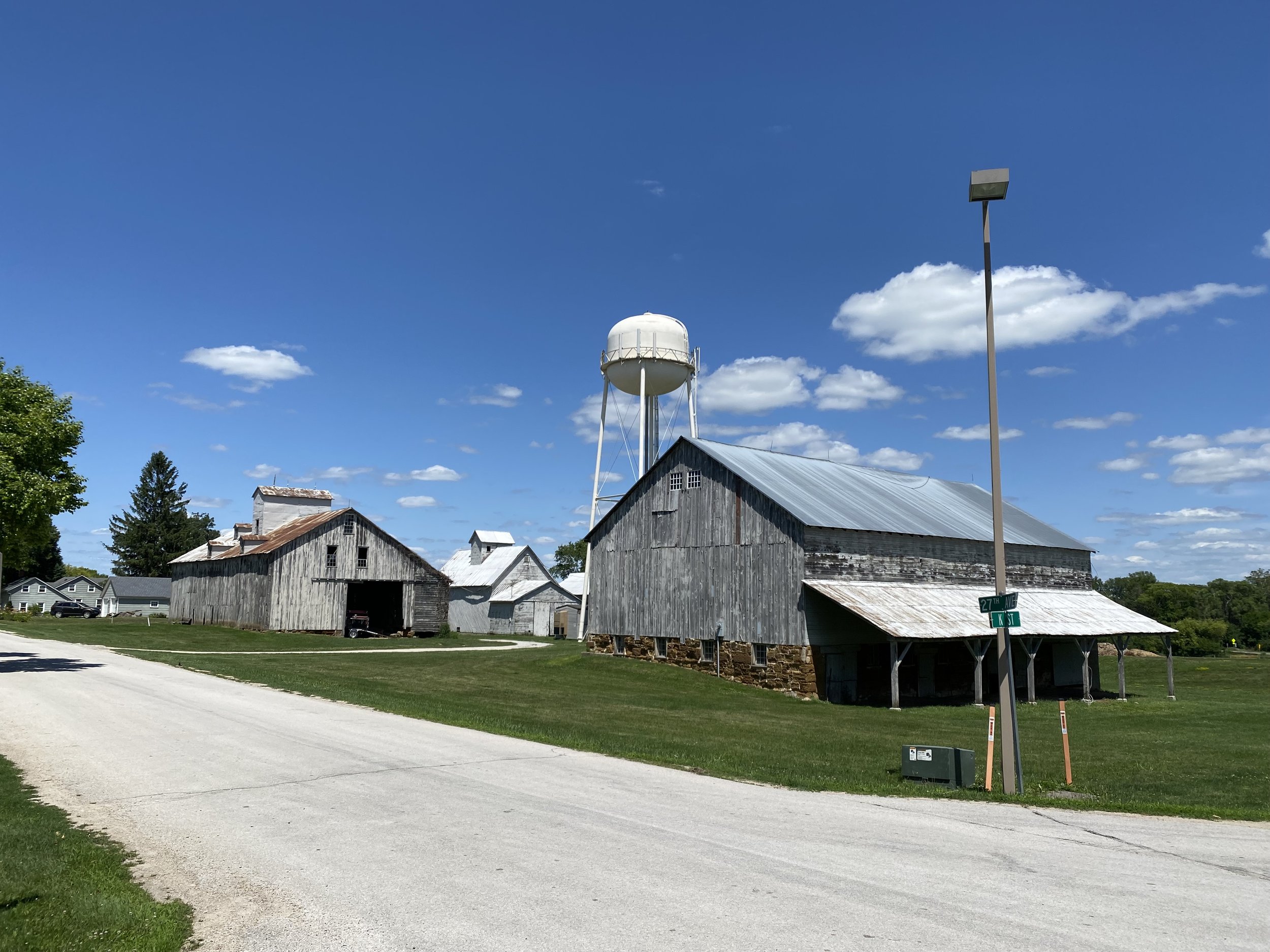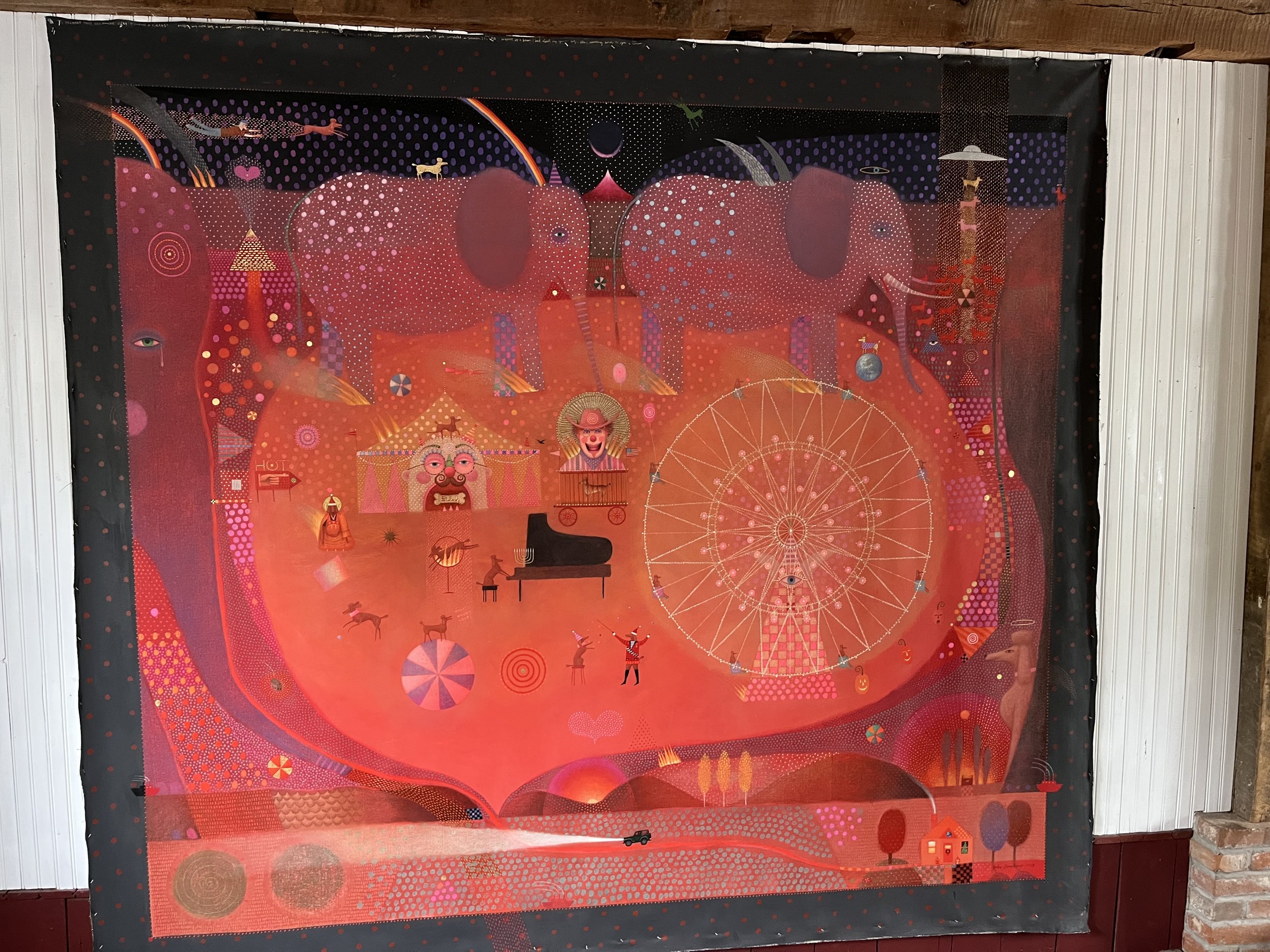IF YOU WANT TO SING OUT
Corn. Corn. And More Corn. But there is more to Iowa than just corn.
We visited a very interesting place called Amana, Iowa which is home to the Amana Colonies. The Amana Colonies are made up of seven villages that were settled by a group of German Radical Pietists who were persecuted in Germany by the government and the Lutheran Church. They called themselves Inspirationists. After immigrating to America, they settled in Iowa in 1856 after a brief stay in New York state. Iowa provided the settlers with a more isolated and vast landscape where they lived a communal life until 1932. The area was very peaceful and it’s easy to see why they settled there.
We learned that the Inspirationists will quickly point out that they are not - and never have been - affiliated with the Amish community. While both groups fled persecution in Germany, the similarities end there. The Inspirationists embrace the ways of the modern world and technology unlike the Amish. The Amana colonies have telephones, use computers and drive cars. In fact, the Amana brand of appliances was founded by a member of the colonies and those appliances continue to be built today!
West Amana still has a number of beautiful and historic buildings, many of which are now retail establishments. The population of West Amana is about 150 and the total population of all seven colonies is probably no more than 1500. One of those 1500 residents includes a fascinating character named John Simpkins who is friends with our dear friend, Sarah. When Sarah heard about our plans to visit Amana, she made our introduction to John. John is an artist who just recently moved into the old granary in South Amana. We visited him at the granary which has been converted into a home and he showed us around the place. He also told us a little about his life, starting with his life as a child in Napa, California. One of his most recent adventures included living in a ghost town in Oregon for ten years - just him and his dog. Population 2 (including his dog!) John would make the three-hour round trip to the closest grocery store until he noticed the constant flow of delivery trucks that traveled on the highway that ran in front of the abandoned building where he lived. We could never imagine being so isolated, but it seemed to suit him. I guess it’s true that you really can get anything you need on Amazon.
We then made a trip into Iowa City and went into a quirky T-shirt store called Raygun. This is the sister store of Raygun in Des Moines. One of the t-shirts we saw quips “Iowa City - the gayest city in the nation.” If you’re curious, the site is www.raygunsite.com. We also visited the University of Iowa and then walked the cute downtown area.
We made a trip into Cedar Rapids where we saw Grant Wood’s studio apartment. Wood was a pioneer of the American Regionalism art movement. He painted his most famous work, “American Gothic” in 1930 at the studio. His mother (and occasionally his sister) lived with him in the apartment. Fun fact- Wood’s sister, Nan, is the woman portrayed in “American Gothic.” The light-filled loft apartment was small and sparse with a make-shift kitchen which was dubbed “the hot dog stand.” The docent told us that Grant Wood was quite the entertainer, so his apartment was party central for those so inclined in Cedar Rapids. He mounted a door to his studio with a picture of a clock which let his visitors know if he was working, taking a bath, or whether it was party time! Wood would simply move the clock hands to a spot on the clock which indicated his current activity. We have included a picture of the whimsical door below.
Our time in Iowa showed us quite a variety of landscapes and people. As the song says, “Well, if you want to sing out, sing out; And if you want to be free, be free; “Cause there’s a million things to be; You know that there are. And if you want to be high, be high; And if you want to be low, be low; ‘Cause there’s a million ways to go; You know that there are.” Cat/Yusuf - one of our favorites.
Peace,
Buster and Betty
A historic Amana home
Another one
More history
The granary in South Amana
A piece by John Simpkins
The historic Englert Theater in Iowa City
A slice of Iowa City’s downtown - the gayest city in America
Here’s Grant Wood - welcoming us to his studio in Cedar Rapids
One of Grant Wood’s works in the Cedar Rapids Museum of Art
The door to Wood’s studio apartment on which he could tell people whether they were welcome










